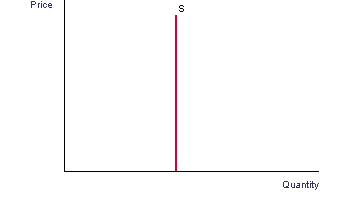Related Flashcards
Related Topics
Cards In This Set
| Front | Back |
|
Own-price elasticity of demand (Ed)
|
A measure of the responsiveness of the quantity demanded to changes in price; equal to the absolute value of the percentage change in quantity demanded divided by the percentage change in price
|
|
Elastic demand
|
The price elasticity of demand is greater than one, so the percentage change in quantity exceeds the percentage change in price
|
|
Inelastic demand
|
The price elasticity of demand is less than one, so the percentage change in quantity is less than the percentage change in price
|
|
Unit elastic demand
|
The price elasticity of demand is one, so the percentage change in quantity equals the percentage change in price
|
|
Perfectly inelastic demand
|
The price elasticity of demand is zero
|
|
Perfectly elastic demand
|
The price elasticity of demand is infinite
|
|
Total revenue
|
The money a firm generates from selling its product
|
|
Income elasticity of demand (Einc)
|
Shows how responsive consumers are to a change in income; i.e. how much quantity demanded changes when income changes
Einc = %∆Qd / %∆inc |
|
Cross-prince of demand (Exy)
|
A measure of the responsiveness of demand to changes in the price of another good;equal to the percentage change in the quantity demanded of one good (X) divided by the percentage change in the price of another good (Y)
|
|
Price elasticity of supply (Es)
|
Show how responsive producers are to a change in price; i.e. how much quantity supplied changes when the price of a product changes
The most important determinant of supply elasticity is TIME |
|
Perfectly inelastic supply
|
 The price elasticity of supply equals zero |
|
Perfectly elastic supply
|
The price elasticity of supply is equal to infinity
|
|
Elasticity measures
|
%∆Qd/ %∆P
∆Qd/avg Qd / ∆P/avg P |
|
Elastic demand
|
%∆Qd > %∆P|Ed| > 1
When consumers are very responsive to price changes, the change in quantity demanded is larger in percentage terns than the change in price |
|
Inelastic demand
|
%∆Qd < %∆P
|Ed| < 1 When consumers are not very responsive to price changes, the change in quantity demanded is smaller in percentage terms than the change in price |







